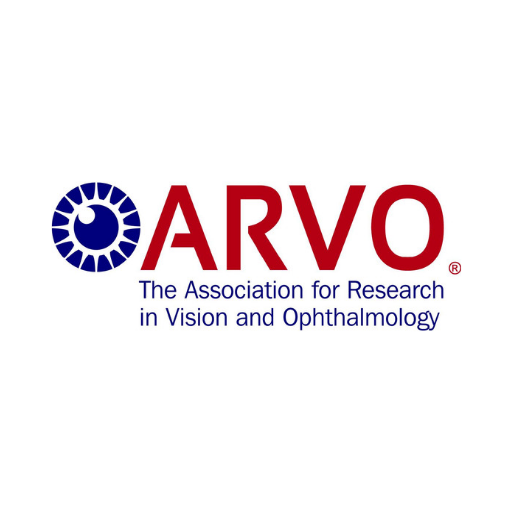May 9, 2022
recap from arvo: tHE LATEST IN VISION RESEARCH
In May, FBC attended the Association for Research in Vision and Ophthalmology (ARVO) Annual Meeting in Denver, Colorado for five days of learning and discussing with leaders in vision research. Here are some of the key themes from the conference:
Teamwork makes the dream work

Being back to in-person events really drove home how important collaboration is among scientists. It was wonderful to see the camaraderie and how researchers were sharing and learning from each other. Science is a long process, but it was clear how small advances taking place around the world are step-by-step moving the field forward.
It’s all about the endpoint
In the past few years, we’ve seen hopeful results from clinical trials testing innovative gene, optogenetic and drug therapies. But we’ve also reported on some disappointments as gene and early stem cell therapy trials have not met their endpoints.
What is an endpoint?
When a clinical trial is being set up, the research team has to state what they will measure to show if a potential treatment works. This is called an endpoint or outcome. Some examples of endpoints are: Does treatment X increase best-corrected visual acuity (BCVA) as measured on an eye chart? Or, does treatment Y increase how quickly a person can move through a mobility “maze”? Most trials measure many different endpoints but there are a small number of “primary” endpoints. If at the conclusion of a trial, the primary endpoint is not met it is very hard to get the treatment approved by regulatory bodies like the FDA or Health Canada even if there are improvements seen in other “secondary” endpoints.
At ARVO, many researchers were talking about the importance of picking the most appropriate endpoints for clinical trials, taking into account disease progression and which outcomes are important to patients.
For example, a Phase 3 study for a choroideremia gene therapy (BIIB11/timrepigene emparvovec) reported last year that it did not meet the primary endpoint of at least a 3-line gain on an eye chart after treatment. One of the principal investigators on the trial Dr. Robert Maclaren (Oxford University) explained that if the primary endpoint had been a 2-line rather than a 3-line gain on an eye chart then the trial would have been considered successful.
In addition, in March we described how ProQR’s Phase 2/3 trial for a potential treatment for Leber Congenital Amaurosis (LCA10), a gene therapy called sepofarsen, did not meet the primary endpoint of significantly increased BCVA after treatment. In the trial, treated eyes were compared to eyes from individuals who received “sham” injections. Surprisingly, there was increase in BCVA in both sepofarsen and sham-treated groups. Dr. Bart Leroy (Ghent University), presented further analysis of the data, demonstrating that comparing treated and untreated eyes from the same individual would have been a better control and shown a bigger impact of the treatment.
In both cases, the primary endpoints were chosen to meet FDA requirements. Researchers discussed that these endpoints did not always reflect the specificity of certain eye diseases or the potential benefit to patients but they were often constrained by the regulatory requirements.
What can be done to improve trials in the future? The importance of natural history studies to better understand the progression of a particular disease was clear. Without this information, researchers are not able to identify the most appropriate endpoints. For example, improving vision might not be a realistic endpoint for some types of inherited retinal diseases and testing if a treatment can maintain vision might be more appropriate.
The FDA and other regulatory bodies also need more information about what endpoints are meaningful for different eye diseases. In addition, it will be important for regulatory bodies and researchers to identify endpoints that capture what is of value to patients. For example, many patients would highly value improved mobility or ease of reading even if there is no clear gain of BCVA on an eye chart.
Finally, some researchers suggested that clinical trials might need to take place over a longer time period since many eye diseases are relatively slow progressing. In these situations, looking for improvement (or lack of disease progression) after 6 or 12 months might not be long enough to demonstrate the impact of a potential treatment and show a difference between treated and untreated eyes.
Understanding Inflammation
You might have noticed that we often refer to treatments that are being tested in clinical trials as “potential” treatments. This is because these therapies have not yet been proven to work in humans so they aren’t considered treatments yet.
These potential therapies have gone through many stages of research in the laboratory and in animal models and the clinical trial is the next stage of research. During this stage, researchers are testing if a treatment is effective and safe. This is a very important stage of research, because unfortunately despite all the previous research that has taken place, many potential treatments do not work as expected or may even cause serious side effects.
As we learn more about gene and cell therapy, researchers believe that inflammation may be occurring more often after treatment than previously thought. This could have implications for both the short- and long-term success of new innovative therapies. In the short term, immune cells may recognize cells that receive gene therapy as “foreign” and eliminate them. This could reduce the efficacy of these treatments. Researchers are also monitoring inflammation to ensure that new therapies don’t cause long-term painful or vision-damaging side effects.
As this new information comes to light, researchers are working hard to identify better ways to design therapies to reduce their inflammatory potential and increase the efficacy of treatment. Some of the innovations discussed included different ways to “cloak” or “mask” stem cells or cells that receive gene therapy as well as unique ways to turn down the body’s immune reaction after treatment.
As the first approved gene therapy, there is ongoing research into the long-term effects of Luxturna for retinitis pigmentosa and Leber congenital amaurosis caused by mutations in RPE65. At the meeting, a few researchers reported that a small but consistent minority of patients who received Luxturna in the United States and Europe developed degenerative patches called atrophy on their retina after treatment. Currently, the atrophy does not seem to be impacting vision and patients are very happy with the treatment. However, this is a reminder that it’s important to continue to monitor for long-term impacts of new treatments. This monitoring will continue for Luxturna to understand what the long-term benefits and potential side effects may be.
In Other News
Here are some other highlights from Denver:
Improving vision through optogenetics and prostheses: Prostheses like the Argus II and early clinical trials with optogenetic therapy have demonstrated the ability to provide light sensation to individuals who are blind. However, it does not resemble “normal” vision and instead is similar to flashes or streaks of light that over time and with training patients learn to interpret.
Researchers presented ways they are trying to improve the quality of vision from optogenetics and prostheses. For prostheses, this includes developing newer electrode chips and more consistent visual rehabilitation protocols.
In the field of optogenetics Dr. John Flannery (UC Berkley), described a new protein (MW-opsin) which can react better to moving objects and doesn’t require light intensifying goggles. This product has only been tested in animal models but is now licenced to Novartis who are developing it further with the aim of moving toward a clinical trial.
Cell replacement therapy to restore or preserve vision in glaucoma: Current treatments for glaucoma are aimed at reducing intraocular pressure and preserving vision. However, if treatments aren’t received in time or don’t work, vision loss is irreversible. Researchers described new potential ways to treat glaucoma and potentially restore sight using stem cell therapy. One group was trying to improve fluid drainage through Schlemm’s canal while others were examining ways to restore optic nerve function. All of this work is currently still in the laboratory so it will be a few years at least before any of them are ready to test in humans in clinical trials.

Join the Fight!
Learn how your support is helping to bring a future without blindness into focus! Be the first to learn about the latest breakthroughs in vision research and events in your community by subscribing to our e-newsletter that lands in inboxes the beginning of each month.


